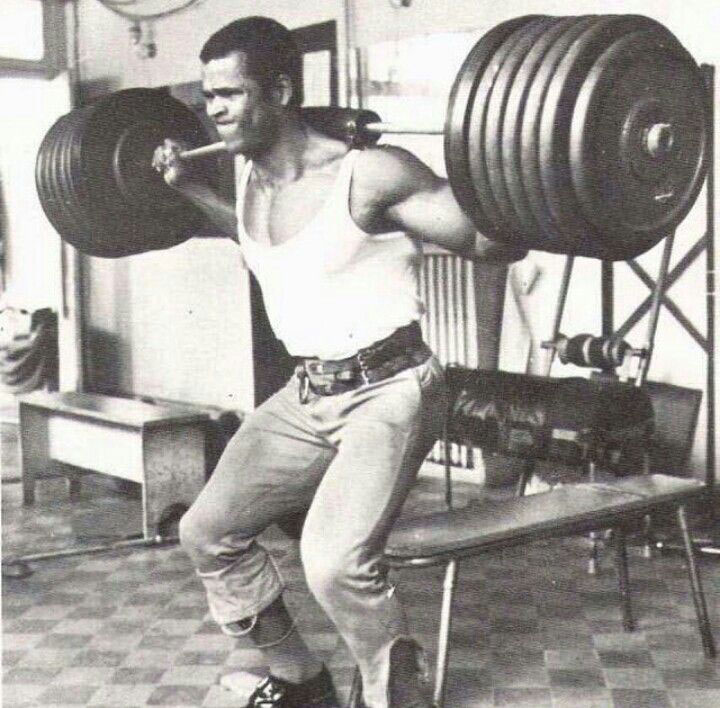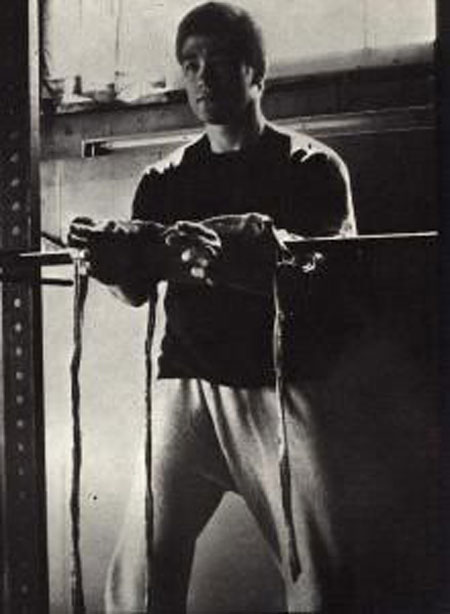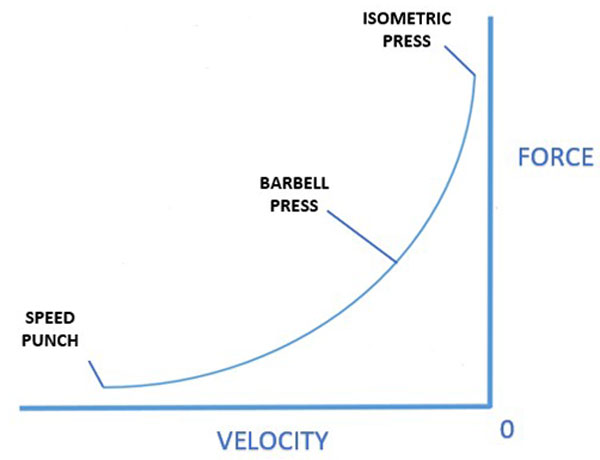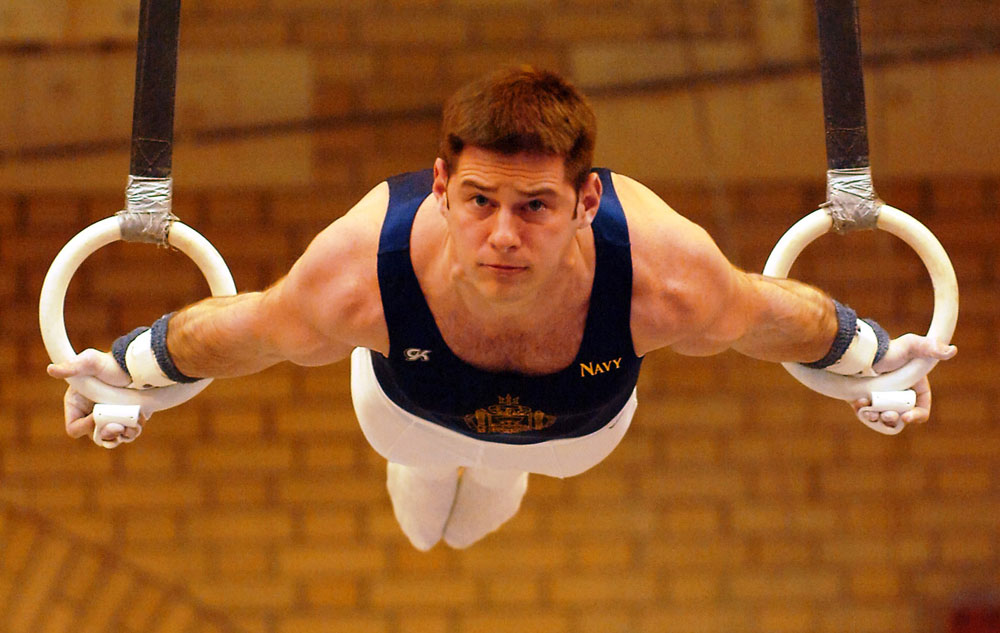The Science of Isometrics Part I: The Third Law of Strength
by Paul “Coach” Wade
There are THREE major Laws of Strength. (I don’t mean "laws" like train your core or bench press on Monday. I’m talking about genuine, well-established scientific principles. Strap yourself in, Jimmy.)
If you want to reach the peak of your potential in the fastest possible time, you need to be utilizing all three—right now. (Yesterday, in fact.)
But there’s a problem. And it’s a doozy.
While the first two laws are well known and used every day in gyms all round the world, the Third Law is virtually unheard of, and is criminally underutilized. The result? If you are not exploiting this law, you are underpowered and missing out on slabs of muscle. Damn.
Let’s put that right. In this article, I’m gonna share the Three Laws with you, and explain how they work.
Let’s start at the beginning. (It’s a very good place to start.)
LAW # 1: HENNEMAN’S SIZE PRINCIPLE. Muscle fibers are activated in order of size according to force requirements.
In a nutshell: The more force your muscles produce, the more muscle fibers you recruit.
Broadly speaking, we have two types of muscle fibers: slow-twitch, and fast-twitch. Slow-twitch fibers are small, and largely aerobically fueled. They adapt to stress by becoming more efficient. (Think: bony-ass marathon runner.) Fast-twitch fibers are big, and typically anaerobic. They adapt to stress by becoming bigger and stronger. (Think: big, jacked-up ba***rd.)
Henneman’s Size Principle says that fibers turn on in response to force requirements, from the smallest to the largest. So light movements—walking, jogging, etc.—activate the smaller, slow-twitch fibers. In order to reach the biggest fibers, you need the biggest amount of force. And these are the fibers strength athletes and bodybuilders need to work on during their training.
To become unusually big and strong requires the muscles to generate abnormally large levels of force, no matter what sport you practice.

Even bodybuilders who train relatively "light" have to hit the heavy stuff sometimes.
Serge Nubret squats big.
Maximum levels of muscular force are absolutely central to strength training, because of this law. High levels of force are also important in bodybuilding—the fast-twitch fibers are the ones that actually grow, so it’s helpful to be able to access them. (Ever notice that the really big guys are always strong as hell?)
See, you know all this, whether you know the name of the law or not. You lift heavy things, right?
Let’s move to Law # 2.
LAW # 2: HEBB’S LAW. an increase in synaptic efficacy arises from a presynaptic cell's repeated and persistent stimulation of a postsynaptic cell.
In a nutshell: Only by repeatedly exerting high levels of force can you teach your body to get stronger.
Hebb’s Law is a law of neurological learning. It basically says that nerve cells that fire together, wire together—or, to put it another way, if you repeatedly apply Henneman’s Size Principle by trying to exert maximum amounts of force, over time your nervous system will get better at recruiting those big, strong fast-twitch fibers.
Maybe when you start training, you can only recruit 20% of your nerve fibers—but when you become advanced, you can recruit maybe 80%. Repeatedly cajoling your muscles to generate high forces actually rewrites your neurological software over time. This is all thanks to Hebb’s Law. Whatever your sport or discipline, you need to drill, drill, drill to get bigger and better.

Want to become a badass at something?
You need to drill it over and over and over—ask a martial artist.
Strength is no different.
The take home for strength athletes is pretty elementary. The athlete who can exert high levels of muscular force more often (and recover) over a longer period of time, will be stronger.
I’m willing to bet that if you train for strength or size—or both—you are already putting both these two key laws into operation in your training. You lift heavy things, and you try to do it repeatedly.
The third major law of strength and size is different. It’s a cornerstone of physiology and physics. It’s arguably the most important of the three major laws, practically speaking. But hardly anybody knows about it—even many coaches and trainers.
Ok. Drum roll, please. Here it is:
LAW # 3: THE FORCE-VELOCITY RELATIONSHIP. The amount of force muscles can exert is inversely proportional to their velocity.
In a nutshell: The more force your muscles produce, the slower they move.
The Force-Velocity Relationship is, essentially, a law of physiology based on physics (originally: Hill’s equation). Stripped of scientific jargon, it means that muscles can move at higher speeds when dealing with low forces—like throwing a baseball, punching or kicking—but the more force a muscle exerts, the slower it moves. When it is at maximum voluntary force, it has to stop moving. It must be static.
Take a moment to think about this. The above law is incontrovertible proof that isometric training—i.e., static training—is the only form of training which allows your muscles to produce maximum force levels.

A graph of the Force-Velocity Relationship.
As muscular force increases, muscle velocity decreases.
At maximum voluntary force, movement stops entirely.
Remember the first two Laws of Strength? That to become optimally strong, you need to exert the highest levels of force you can, and keep doing so over time? Well, this Third Law completes the first two. It tells you exactly how to produce the highest levels of force.
Through isometric exercise.
Isometrics aren’t just a "good" method—if you want to accelerate your strength gains beyond anything you’ve ever known, isometrics are the best method.
The science backs this up. The original German papers on isometrics shocked the world when its test subjects demonstrated astonishing strength gains of 5% per week (Hettinger and Muller, 1956). Put that in context—imagine doubling your absolute strength in 20 weeks! With isometrics, it can happen.
Since then, a metric ton of experimental studies have borne out the efficacy of isometrics as a method of strength development. Isometric strength is one of the most studied areas of human performance. You just never hear about it.
In the pre-steroid era, all the great old-time strongmen used isometrics in training and as feats of strength. They learned to handle forces that could tear lesser men apart, and became Herculean as a result. Pound-for-pound, the strongest athletes on the planet are probably gymnasts, and their most impressive feats of strength are isometric holds—the Iron Cross, Maltese Cross, inverted cross, and so on.

Now, the elite coaches—who know the science—use the Third Law, and exploit isometrics correctly. Pavel Tsatsouline, Louie Simmons, Christian Thibaudeau and others have written about using "isos". But the everyday athletes working out in gyms and garages across the globe—who really
need this information—never seem to incorporate isometrics. At all.
Hopefully I have your attention at this point. You might be asking:
but Uncle Paulie, how can I use the third Law to get stronger? How should I approach isometrics?
The answer is that not all isometric drills are created equal. If you do isos
right, they will amplify your strength faster (and more safely) than any other method in existence. Do them
wrong, and they are minimally effective. To really ratchet your training into the stratosphere this year, you need the simple keys that fully and permanently unlock optimal isometrics.
I’ll hand them to you in Part II of this article, my friend.
Paul "Coach" Wade is a bodyweight enthusiast and fan of old-school strength training methods. He is the creator of the ISOCHAIN, a device available on pre-order only from Dragon Door.
Back